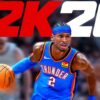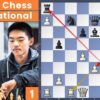As the NBA offseason winds down and the rumble of the 2025-26 season begins to echo across the league, attention naturally gravitates towards star players, blockbuster trades, and championship narratives. Yet, beneath the surface of sports headlines and highlight reels, a more granular story unfolds—one told through raw data and compelling statistics. This season, perhaps more than ever, specific numbers will serve as critical indicators, defining the trajectory of every franchise and the legacy of its stars.
From player efficiency ratings to playoff win percentages, these seemingly mundane figures offer a profound insight into team strategies, developmental hurdles, and the sheer challenge of sustained excellence in the modern NBA. Let us delve into the statistical heart of the upcoming season, dissecting the defining numbers that could swing destinies and redefine expectations.
The Contenders: Defining Moments and Persistent Puzzles
For the league`s elite, the path to a championship is often paved with consistency, but even the strongest contenders face their unique statistical challenges. The **Oklahoma City Thunder**, fresh off a championship run, boast an enviable continuity, returning players accounting for a remarkable **99.2%** of their playoff minutes. This figure is a testament to their stable, youthful core and suggests they are well-positioned for an unprecedented repeat campaign, potentially even surpassing their record-setting point differential from last season.
In contrast, the **Milwaukee Bucks** find themselves in a peculiar statistical slump. Despite having a two-time MVP in Giannis Antetokounmpo, they have secured just **1** playoff series win in the four seasons since their 2021 title. This stark reality underscores a massive disappointment, hinting at the pressures that fueled their significant financial gambles this past summer. The question remains: can this new iteration translate regular-season dominance into playoff success?
The **Boston Celtics**, facing the monumental absence of Jayson Tatum due to injury, must contend with a drastic shift in their frontcourt. A staggering **99.5%** of their center minutes from last postseason belonged to players no longer with the team. This void, filled by a new cast, presents a major tactical adjustment for coach Joe Mazzulla and casts a shadow of doubt over Boston`s ability to remain competitive during what might be seen as a “gap year.” Meanwhile, the **Cleveland Cavaliers** illustrate a familiar statistical paradox: a **66%** regular-season win rate over three seasons with Donovan Mitchell shrinks to a mere **42%** in the playoffs. Their consistent inability to close out playoff series, despite regular-season brilliance, puts immense pressure on them to prove that this year, finally, something is different.
And what of the **Minnesota Timberwolves**? Their superstar, Anthony Edwards, continues his ascent, now finishing sixth in MVP voting. However, the sobering truth is that the past **21** NBA champions have featured a current or recent First-Team All-NBA honoree. Edwards, at 24, is on the cusp, but he needs to make that final leap to solidify his status as a top-five player if Minnesota truly intends to reach the promised land.
Rising Stars and Their Unyielding Metrics
Individual player statistics often reveal the true potential, or underlying issues, within a team`s core. For the **Atlanta Hawks**, optimism hinges on Jalen Johnson`s development. His unique statistical profile of **10 rebounds and 5 assists per game** places him in an elite class of big-men stat-stuffers, hinting at a potential All-NBA caliber rise. If he can stay healthy, Johnson could redefine the Hawks` ceiling.
Conversely, the **Charlotte Hornets** grapple with LaMelo Ball`s perplexing efficiency. His league-leading **35.9% usage rate** last season, historically reserved for superstars, was coupled with the worst Player Efficiency Rating (PER) for any player at that usage level in NBA history. This raises serious questions about whether he is truly a franchise cornerstone or merely an entertaining, ball-dominant anomaly who struggles to translate touches into wins.
The **Memphis Grizzlies** face a similar dilemma with Ja Morant. Over his past three seasons, Morant has shot a dismal **30.5% from beyond the arc**, making him one of the least accurate high-volume point guards in the league. In an NBA increasingly defined by spacing, this persistent statistical weakness could severely hinder the Grizzlies` playoff aspirations, regardless of Morant`s other prodigious talents.
Even the promising **Indiana Pacers** have their statistical quandaries. Bennedict Mathurin, a former top-10 pick, has seen his PER stagnate at around **13.6** across his first three seasons. With Tyrese Haliburton sidelined, Mathurin has a golden opportunity to break through this statistical plateau and prove he can expand his game beyond a pure downhill scorer, a crucial development for the Pacers` long-term future.
Rebuilding Roadmaps and Fiscal Realities
Not every team is chasing a title; some are navigating the complex, often frustrating, path of a rebuild. The **Phoenix Suns** stand as a cautionary tale, having mortgaged their future to such an extent that they don`t control their own first-round pick until **2032**. This unprecedented long-term commitment, combined with a present-day status as a Western Conference underdog, leaves them with no realistic option to tank—a statistical quagmire that defines their next half-decade.
The **Toronto Raptors** present a different kind of financial riddle. Projected to finish **$1.1 million above the first apron**, they are among the league`s most expensive teams without the corresponding on-court success. Unlike other apron teams, who are maximizing a win-now window, Toronto`s high payroll reflects a roster that hasn`t made the playoffs in three seasons. This significant investment carries both sneaky upside in a weaker Eastern Conference and considerable downside if their pieces fail to coalesce quickly.
The **Washington Wizards**, after two seasons of losing **64 or more games**, are firmly entrenched in a deep rebuild. This historically dismal statistical trend suggests that relying heavily on youth will likely lead to continued futility in the upcoming season. Similarly, the **Utah Jazz**, still getting younger with only Lauri Markkanen remaining from their previous veteran core, seem poised to give even more playing time to developing players, with only **23** being the average age of the few remaining veterans.
Strategic Imperatives and Playmaking Puzzles
Beyond individual and team records, advanced statistics illuminate strategic decisions and on-court dynamics. The **Los Angeles Lakers**, with LeBron James and Luka Doncic, possess a theoretically unguardable pick-and-roll duo. Yet, their combined picks per 100 possessions stood at a mere **4.4** last regular season. Despite this number rising in the playoffs with devastating effect, the underutilization of such a potent weapon remains a peculiar statistical anomaly they must rectify to maximize this unique partnership.
The **Houston Rockets**, by acquiring Kevin Durant, directly addressed their most glaring offensive weakness. Last season, they ranked poorly in half-court scoring and isolation efficiency. Durant`s league-leading **1.21 points per isolation** is the precise statistical antidote they needed, transforming their late-game offense into a formidable force in the West.
On the defensive end, the **Sacramento Kings** new “big three” showcased a catastrophic **120.9 defensive rating** when on the court together. This abysmal figure, which places them in the 11th percentile league-wide, suggests that despite their offensive talents, their defensive struggles will keep them firmly in limbo after a brief competitive window. Meanwhile, the **Portland Trail Blazers** grapple with a league-worst **16% turnover rate**, compounded by their new backcourt`s struggles with ball security, highlighted by Scoot Henderson`s poor assist-to-turnover ratio. This statistical Achilles` heel could prevent their otherwise promising defense from pushing them into the playoff picture.
Finally, the **San Antonio Spurs** face a crucial test of their guards` shooting. Their main contingent of talented guards, including top draft picks, collectively shot just **30.4% from three-point range** last season. This statistical deficiency poses a significant spacing challenge around the generational talent of Victor Wembanyama, suggesting that difficult personnel decisions loom if these numbers don`t improve.
As the 2025-26 NBA season tips off, the narratives will be rich with tales of triumph and tribulation. But beyond the headlines, the definitive story will be quietly told in the numbers. These statistics, often overlooked in favor of flashier storylines, are the bedrock of success, revealing which teams have built wisely, which players are evolving, and which franchises are truly positioned to write their chapter in NBA history. The numbers, after all, rarely lie.








